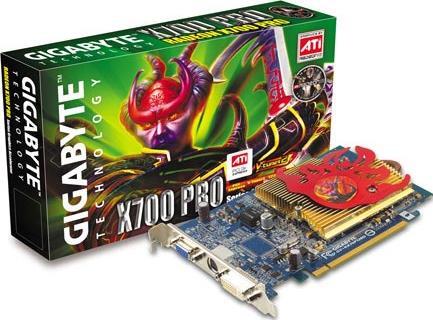GV-RX70P128D-SP
1/1

- Powered by ATI RadeonTM X700Pro VPU
- Supports PCI Express and 8 pipelines
- Microsoft DirectX® 9.0 and OpenGL® 1.5support
- Integrated with the industry's best 128MB GDDR3 memory and 128-bit memory interface
- Features DVI-I / D-sub / TV-OUT
- Supports HDTV function and HDTV cable enclosed
- Unique Silent-Pipe design